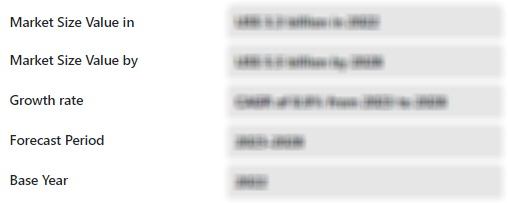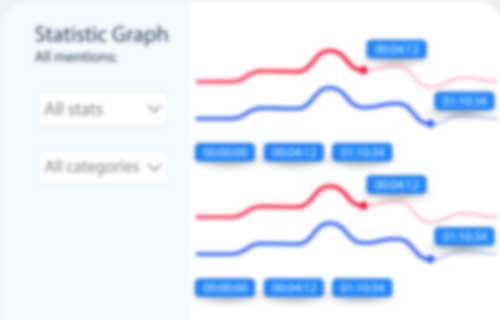The Residential Outdoor Shed Market size is projected to reach US$ 2.68 billion by 2031 from US$ 1.75 billion in 2024. The market is expected to register a CAGR of 4.7% during 2025–2031.
Residential Outdoor Shed Market AnalysisResidential Outdoor Sheds allow customers and businesses to safely send payment information. They work with different payment methods, such as credit and debit cards, net banking, UPI, and mobile wallets. With the rising number of people shopping online and using digital payments, the need for secure online transactions is increasing. Therefore, Residential Outdoor Sheds are growing rapidly across the world because they offer fast, safe, and dependable ways to pay.
Residential Outdoor Shed Market OverviewConsumers are also seeking eco-friendly and customizable options, aligning with sustainability trends. E-commerce platforms have expanded access, allowing buyers to explore diverse styles and functionalities. Opportunities lie in smart shed innovations, such as solar-powered units and app-controlled security, as well as in compact, space-efficient models for urban homes. Further, scope for customization as per the users' needs is one of the upcoming trends in the global residential outdoor shed industry during the 2025-2031.
Strategic Insights
Residential Outdoor Shed Market Drivers and OpportunitiesMarket Drivers:
- Rise in Home Improvement and DIY Trends Homeowners are increasingly investing in outdoor spaces, driving demand for sheds used for storage, workshops, and hobby areas.
- Growth in E-commerce for Home & Garden Products Online platforms make it easier for consumers to browse, customize, and purchase sheds, boosting market accessibility and sales.
- Urbanization and Space Optimization As urban living spaces shrink, outdoor sheds offer a practical solution for storage and organization, especially in suburban and semi-urban areas.
- Increased Focus on Sustainability Eco-friendly shed materials (like recycled wood or metal) and energy-efficient designs are gaining popularity, aligning with global sustainability goals.
- Technological Advancements in Shed Design Innovations such as modular sheds, smart locks, solar-powered lighting, and app-based monitoring are enhancing shed functionality and appeal.
- Supportive Government Policies for Housing and Outdoor Infrastructure Incentives for home improvement and green building practices in regions like North America and Europe are indirectly supporting shed installations.
Market Opportunities:
- Smart Shed Integration Incorporating IoT features like climate control, security systems, and remote access can create premium product segments.
- Customization and Modular Solutions Offering sheds that can be tailored to specific needs (e.g., gardening, gym, office) opens up niche markets and enhances customer satisfaction.
- Expansion in Emerging Markets Rising disposable incomes and growing interest in home improvement in countries like India, Brazil, and Southeast Asia present untapped potential.
- Eco-Friendly and Sustainable Products Developing sheds with low environmental impact materials and energy-efficient features can attract environmentally conscious consumers.
- Rental and Subscription Models Innovative business models like shed rentals or “shed-as-a-service” for temporary needs (e.g., events, seasonal storage) could disrupt traditional sales.
The Residential Outdoor Shed market is divided into different segments to give a clearer view of how it works, its growth potential, and the latest trends. Below is the standard segmentation approach used in most industry reports:
By Type:
- Wood Sheds These offer a traditional and natural look, often preferred for their aesthetic appeal and insulation. They are ideal for gardens and classic home designs but require regular maintenance to prevent weather and pest damage.
- Plastic Sheds Lightweight and resistant to rot and rust, plastic sheds are easy to install and maintain. They are suitable for users seeking a low-maintenance solution, though they may not be as durable as other materials.
- Metal Sheds Known for their strength and security, metal sheds are ideal for long-term storage and harsh weather conditions. They are often made from galvanized steel or aluminum and require rust-resistant coatings for durability. Metal Sheds is dominating the market
- Others (Composite, Resin, Vinyl) These materials combine the benefits of wood and plastic, offering durability, weather resistance, and modern aesthetics. They are increasingly popular in premium segments due to their low maintenance and stylish designs.
By Product Type:
- Small Sheds Compact and affordable, small sheds are perfect for storing tools, gardening supplies, and seasonal items. They are ideal for urban homes with limited outdoor space.
- Medium Sheds These provide a balance between storage capacity and footprint, suitable for workshops, bike storage, or hobby areas. They are versatile and often come with customizable interiors. Medium shed is dominating segment the market.
- Large Sheds Designed for extensive storage or alternative uses like home offices, gyms, or studios, large sheds cater to homeowners looking to expand their functional living space. They often feature smart integrations and modular designs.
By Distribution Channel:
- Online
- Offline
By Geography:
- North America
- Europe
- Asia Pacific
- Latin America
- Middle East & Africa
The Residential Outdoor Shed market in Asia Pacific is expected to witness the fastest growth.
Residential Outdoor Shed Market Report Scope
Residential Outdoor Shed Market Share Analysis by GeographyThe demand for residential outdoor sheds is particularly high in North America due to a combination of lifestyle, economic, and environmental factors. Homeowners in the U.S. and Canada typically have larger properties, making it easier to install standalone structures like sheds. The region also has a strong DIY culture, where individuals prefer to manage home improvement and storage solutions themselves. Additionally, the popularity of outdoor living spaces such as patios, gardens, and backyard offices has surged, especially post-pandemic, driving the need for versatile outdoor structures. North American consumers also show a growing interest in customizable and smart sheds, equipped with features like solar panels, lighting, and security systems.
The Residential Outdoor Shed market grows differently in each region. This is because of factors like digital technology, government rules, how people shop, and the use of online shopping. Below is a summary of market share and trends by region:
1. North America
- Market Share North America holds a dominant share of the global residential outdoor shed market.
- Key Drivers
- High demand for home improvement and DIY projects.
- Large suburban housing with ample backyard space.
- Strong presence of leading shed manufacturers and retailers.
- Trends Increasing adoption of smart sheds with IoT features, and rising interest in sheds as functional extensions of the home (e.g., offices, gyms).
2. Europe
- Market Share Europe maintains a substantial share due to early adoption of modular and sustainable outdoor structures.
- Key Drivers
- Emphasis on eco-friendly materials and energy-efficient designs.
- Growth in urban gardening and outdoor leisure activities.
- Supportive regulations for green building and home improvement.
- Trends Rising popularity of compact sheds for urban homes and integration of solar-powered features
3. Asia Pacific
- Market Share Asia Pacific is the fastest-growing region, with market share expanding rapidly year over year.
- Key Drivers
- Rapid urbanization and increasing disposable income.
- Government initiatives promoting homeownership and outdoor infrastructure.
- Growth of e-commerce platforms offering customizable shed solutions.
- Trends Surge in demand for affordable, modular sheds and growing interest in multi-functional outdoor spaces, especially in emerging economies like India, China, and Southeast Asia
4. South and Central America
- Market Share Emerging market with moderate but steadily increasing share.
- Key Drivers
- Growing interest in home improvement and outdoor living spaces.
- Expansion of middle-class housing and suburban development.
- Rise of local e-commerce platforms offering shed kits and DIY solutions.
- Trends Increasing demand for affordable, weather-resistant sheds and modular designs suited to varied climates.
5. Middle East and Africa
- Market Share Developing market with niche demand, especially in residential compounds and gated communities.
- Key Drivers
- Rising urbanization and infrastructure development.
- Growing awareness of outdoor utility spaces in residential planning.
- Climate-specific needs driving demand for heat-resistant and low-maintenance materials.
- Trends Preference for metal and composite sheds due to durability in extreme weather, and gradual adoption of smart shed features in premium housing projects
High Market Density and Competition
Competition is strong due to the presence of established players such as PayPal, Stripe, Adyen, Square, and Worldpay. Regional and niche providers like Razorpay (India), PayU (Latin America & Europe), and Flutterwave (Africa) are also adding to the competitive landscape across different regions.
This high level of competition urges companies to stand out by offering:
- Diverse product types and materials cater to varied consumer needs, increasing rivalry.
- Low entry barriers allow many small and regional players to enter the market.
- Customization demand pushes brands to innovate and differentiate constantly.
- Strong presence of global and local manufacturers intensifies price and feature competition.
- E-commerce growth enables direct-to-consumer sales, increasing market saturation.
- Technological advancements like smart sheds and modular designs raise innovation stakes.
- Price-sensitive consumers drive aggressive pricing and promotional strategies.
- Expanding DIY culture and home improvement trends attract new entrants and disruptors.
Opportunities and Strategic Moves
- Smart Shed Integration Adding IoT features like climate control, security systems, and remote access.
- Eco-Friendly Materials Using sustainable, recycled, or energy-efficient materials to attract green-conscious consumers.
- Modular & Custom Designs Offering sheds tailored for specific uses like offices, gyms, or studios.
- Expansion in Emerging Markets Tapping into rising demand in Asia Pacific, South America, and Africa.
- E-commerce Growth Leveraging online platforms for direct sales, virtual configurators, and bundled services.
- Rental & Subscription Models Introducing flexible ownership options for temporary or seasonal needs
- Product Innovation Invest in R&D for smart, modular, and multi-functional shed designs.
- Partnerships & Distribution Collaborate with home improvement retailers and e-commerce platforms.
- Localized Manufacturing Set up regional production to reduce costs and cater to local preferences.
- Marketing Personalization Use data-driven campaigns to target specific user segments and shed applications.
- After-Sales Services Offer installation, maintenance, and upgrade packages to enhance customer loyalty.
- Sustainability Branding Position eco-friendly products as premium offerings with long-term value
- Keter Group (Israel)
- BeaverFit (US)
- Lifetime Products Inc. (US)
- Suncast Corporation (US)
- BHB Bertsch Holzbau Sp. z o. o. (Poland)
- Arrow Storage Products
- ShelterLogic Group (US)
- Duramax Building Products (US)
- Tuff Shed (US)
- Palmako AS (Estonia)
- PME Metal Sheds (China)
Disclaimer: The companies listed above are not ranked in any particular order.
Other companies analysed during the course of research:
- Backyard Products (US)
- ShelterLogic Group (US)
- Rowlinson Garden Products (UK)
- Outsunny (China)
- Yardmaster International (Ireland)
- Absco Sheds (Australia)
- Derksen Portable Buildings (US)
- Cedarshed Industries (US)
- Maestro Shed (India)
- Woodpro Sheds (UK)
- BeaverFit announced new product BeaverFit, a leading provider of outdoor fitness equipment, has unveiled an updated version of its Shred Shed, designed to offer enhanced customization and expanded training capabilities. This newly redesigned unit caters to a wide range of users including gyms, educational institutions, emergency response teams, military organizations, and community groups who are looking to bring fitness outdoors. The upgraded Shred Shed supports diverse workout needs while promoting flexible, space-efficient training environments.
- Keter Group launched new product Keter, a global leader in resin-based outdoor lifestyle products, has introduced its new Signature Collection, blending classic wood-grain aesthetics with the durability of advanced resin materials. This collection addresses the growing need for outdoor storage solutions that are both functional and visually appealing. Unlike traditional storage units that are often tucked away, the Signature Collection is crafted to stand out designed to complement natural surroundings while enhancing backyard décor. With its elegant design and robust construction, the collection offers a stylish alternative for homeowners seeking storage that adds charm to their outdoor spaces.
The "Residential Outdoor Shed Market Size and Forecast (2021–2031)" report provides a detailed analysis of the market covering below areas:
- Residential Outdoor Shed Market size and forecast at global, regional, and country levels for all the key market segments covered under the scope
- Residential Outdoor Shed Market trends, as well as market dynamics such as drivers, restraints, and key opportunities
- Detailed PEST and SWOT analysis
- Residential Outdoor Shed Market analysis covering key market trends, global and regional framework, major players, regulations, and recent market developments
- Industry landscape and competition analysis covering market concentration, heat map analysis, prominent players, and recent developments for the Residential Outdoor Shed Market
- Detailed company profiles

Have a question?

Naveen
Naveen will walk you through a 15-minute call to present the report’s content and answer all queries if you have any.
 Speak to Analyst
Speak to Analyst
- Sample PDF showcases the content structure and the nature of the information with qualitative and quantitative analysis.
- Request discounts available for Start-Ups & Universities
- Sample PDF showcases the content structure and the nature of the information with qualitative and quantitative analysis.
- Request discounts available for Start-Ups & Universities

Report Coverage
Revenue forecast, Company Analysis, Industry landscape, Growth factors, and Trends

Segment Covered
This text is related
to segments covered.

Regional Scope
North America, Europe, Asia Pacific, Middle East & Africa, South & Central America

Country Scope
This text is related
to country scope.
Frequently Asked Questions
A key future trend in the residential outdoor shed market is the rise of multi-functional sheds, designed to serve as offices, studios, or gyms, blending utility with lifestyle enhancement.
The digitalization and AI-driven predictive maintenance is the future trends of the Residential outdoor shed market.
The residential outdoor shed market is evolving with smart innovations and versatile applications. Modern sheds now feature solar panels, remote-controlled lighting, climate regulation, and security systems, transforming them into tech-enabled outdoor solutions.
With lockdowns and remote work becoming the norm, people spent more time at home and began investing in their living spaces. Outdoor sheds became popular as home offices, gyms, and hobby rooms, offering a private, functional retreat within the property.
The North America held the largest market share in 2024, followed by Europe owing to the increasing DIY preferences
The residential outdoor shed market was valued at US$ 1.75 million in 2024 and is projected to reach US$ 2.68 million by 2031; it is expected to grow at a CAGR of 4.7% during 2025–2031.
The metal shed held the largest market share in 2024 owing to high durability of the product.
The key players, holding majority shares, in residential outdoor shed market includes Keter Group, BeaverFit, Lifetime Products Inc., Suncast Corporation, Rubbermaid, Arrow Storage Products, ShelterLogic Group, Duramax Building Products, Tuff Shed, Palmako AS.
The global demand for small and medium-sized residential outdoor sheds is rising due to limited urban space, affordability, ease of installation, and their versatility for storage, hobbies, and compact outdoor living.
The residential outdoor shed market is being propelled by several dynamic factors. A major driver is the growing trend of outdoor living and backyard enhancement, where homeowners are transforming outdoor spaces into functional extensions of their homes.
Yes! We provide a free sample of the report, which includes Report Scope (Table of Contents), report structure, and selected insights to help you assess the value of the full report. Please click on the "Download Sample" button or contact us to receive your copy.
Absolutely - analyst assistance is part of the package. You can connect with our analyst post-purchase to clarify report insights, methodology or discuss how the findings apply to your business needs.
Once your order is successfully placed, you will receive a confirmation email along with your invoice.
• For published reports: You'll receive access to the report within 4-6 working hours via a secured email sent to your email.
• For upcoming reports: Your order will be recorded as a pre-booking. Our team will share the estimated release date and keep you informed of any updates. As soon as the report is published, it will be delivered to your registered email.
We offer customization options to align the report with your specific objectives. Whether you need deeper insights into a particular region, industry segment, competitor analysis, or data cut, our research team can tailor the report accordingly. Please share your requirements with us, and we'll be happy to provide a customized proposal or scope.
The report is available in either PDF format or as an Excel dataset, depending on the license you choose.
The PDF version provides the full analysis and visuals in a ready-to-read format. The Excel dataset includes all underlying data tables for easy manipulation and further analysis.
Please review the license options at checkout or contact us to confirm which formats are included with your purchase.
Our payment process is fully secure and PCI-DSS compliant.
We use trusted and encrypted payment gateways to ensure that all transactions are protected with industry-standard SSL encryption. Your payment details are never stored on our servers and are handled securely by certified third-party processors.
You can make your purchase with confidence, knowing your personal and financial information is safe with us.
Yes, we do offer special pricing for bulk purchases.
If you're interested in purchasing multiple reports, we're happy to provide a customized bundle offer or volume-based discount tailored to your needs. Please contact our sales team with the list of reports you're considering, and we'll share a personalized quote.
Yes, absolutely.
Our team is available to help you make an informed decision. Whether you have questions about the report's scope, methodology, customization options, or which license suits you best, we're here to assist. Please reach out to us at sales@theinsightpartners.com, and one of our representatives will get in touch promptly.
Yes, a billing invoice will be automatically generated and sent to your registered email upon successful completion of your purchase.
If you need the invoice in a specific format or require additional details (such as company name, GST, or VAT information), feel free to contact us, and we'll be happy to assist.
Yes, certainly.
If you encounter any difficulties accessing or receiving your report, our support team is ready to assist you. Simply reach out to us via email or live chat with your order information, and we'll ensure the issue is resolved quickly so you can access your report without interruption.
The Insight Partners performs research in 4 major stages: Data Collection & Secondary Research, Primary Research, Data Analysis and Data Triangulation & Final Review.
- Data Collection and Secondary Research:
As a market research and consulting firm operating from a decade, we have published many reports and advised several clients across the globe. First step for any study will start with an assessment of currently available data and insights from existing reports. Further, historical and current market information is collected from Investor Presentations, Annual Reports, SEC Filings, etc., and other information related to company’s performance and market positioning are gathered from Paid Databases (Factiva, Hoovers, and Reuters) and various other publications available in public domain.
Several associations trade associates, technical forums, institutes, societies and organizations are accessed to gain technical as well as market related insights through their publications such as research papers, blogs and press releases related to the studies are referred to get cues about the market. Further, white papers, journals, magazines, and other news articles published in the last 3 years are scrutinized and analyzed to understand the current market trends.
- Primary Research:
The primarily interview analysis comprise of data obtained from industry participants interview and answers to survey questions gathered by in-house primary team.
For primary research, interviews are conducted with industry experts/CEOs/Marketing Managers/Sales Managers/VPs/Subject Matter Experts from both demand and supply side to get a 360-degree view of the market. The primary team conducts several interviews based on the complexity of the markets to understand the various market trends and dynamics which makes research more credible and precise.
A typical research interview fulfils the following functions:
- Provides first-hand information on the market size, market trends, growth trends, competitive landscape, and outlook
- Validates and strengthens in-house secondary research findings
- Develops the analysis team’s expertise and market understanding
Primary research involves email interactions and telephone interviews for each market, category, segment, and sub-segment across geographies. The participants who typically take part in such a process include, but are not limited to:
- Industry participants: VPs, business development managers, market intelligence managers and national sales managers
- Outside experts: Valuation experts, research analysts and key opinion leaders specializing in the electronics and semiconductor industry.
Below is the breakup of our primary respondents by company, designation, and region:

Once we receive the confirmation from primary research sources or primary respondents, we finalize the base year market estimation and forecast the data as per the macroeconomic and microeconomic factors assessed during data collection.
- Data Analysis:
Once data is validated through both secondary as well as primary respondents, we finalize the market estimations by hypothesis formulation and factor analysis at regional and country level.
- 3.1 Macro-Economic Factor Analysis:
We analyse macroeconomic indicators such the gross domestic product (GDP), increase in the demand for goods and services across industries, technological advancement, regional economic growth, governmental policies, the influence of COVID-19, PEST analysis, and other aspects. This analysis aids in setting benchmarks for various nations/regions and approximating market splits. Additionally, the general trend of the aforementioned components aid in determining the market's development possibilities.
- 3.2 Country Level Data:
Various factors that are especially aligned to the country are taken into account to determine the market size for a certain area and country, including the presence of vendors, such as headquarters and offices, the country's GDP, demand patterns, and industry growth. To comprehend the market dynamics for the nation, a number of growth variables, inhibitors, application areas, and current market trends are researched. The aforementioned elements aid in determining the country's overall market's growth potential.
- 3.3 Company Profile:
The “Table of Contents” is formulated by listing and analyzing more than 25 - 30 companies operating in the market ecosystem across geographies. However, we profile only 10 companies as a standard practice in our syndicate reports. These 10 companies comprise leading, emerging, and regional players. Nonetheless, our analysis is not restricted to the 10 listed companies, we also analyze other companies present in the market to develop a holistic view and understand the prevailing trends. The “Company Profiles” section in the report covers key facts, business description, products & services, financial information, SWOT analysis, and key developments. The financial information presented is extracted from the annual reports and official documents of the publicly listed companies. Upon collecting the information for the sections of respective companies, we verify them via various primary sources and then compile the data in respective company profiles. The company level information helps us in deriving the base number as well as in forecasting the market size.
- 3.4 Developing Base Number:
Aggregation of sales statistics (2020-2022) and macro-economic factor, and other secondary and primary research insights are utilized to arrive at base number and related market shares for 2022. The data gaps are identified in this step and relevant market data is analyzed, collected from paid primary interviews or databases. On finalizing the base year market size, forecasts are developed on the basis of macro-economic, industry and market growth factors and company level analysis.
- Data Triangulation and Final Review:
The market findings and base year market size calculations are validated from supply as well as demand side. Demand side validations are based on macro-economic factor analysis and benchmarks for respective regions and countries. In case of supply side validations, revenues of major companies are estimated (in case not available) based on industry benchmark, approximate number of employees, product portfolio, and primary interviews revenues are gathered. Further revenue from target product/service segment is assessed to avoid overshooting of market statistics. In case of heavy deviations between supply and demand side values, all thes steps are repeated to achieve synchronization.
We follow an iterative model, wherein we share our research findings with Subject Matter Experts (SME’s) and Key Opinion Leaders (KOLs) until consensus view of the market is not formulated – this model negates any drastic deviation in the opinions of experts. Only validated and universally acceptable research findings are quoted in our reports.
We have important check points that we use to validate our research findings – which we call – data triangulation, where we validate the information, we generate from secondary sources with primary interviews and then we re-validate with our internal data bases and Subject matter experts. This comprehensive model enables us to deliver high quality, reliable data in shortest possible time.





 Get Free Sample For
Get Free Sample For